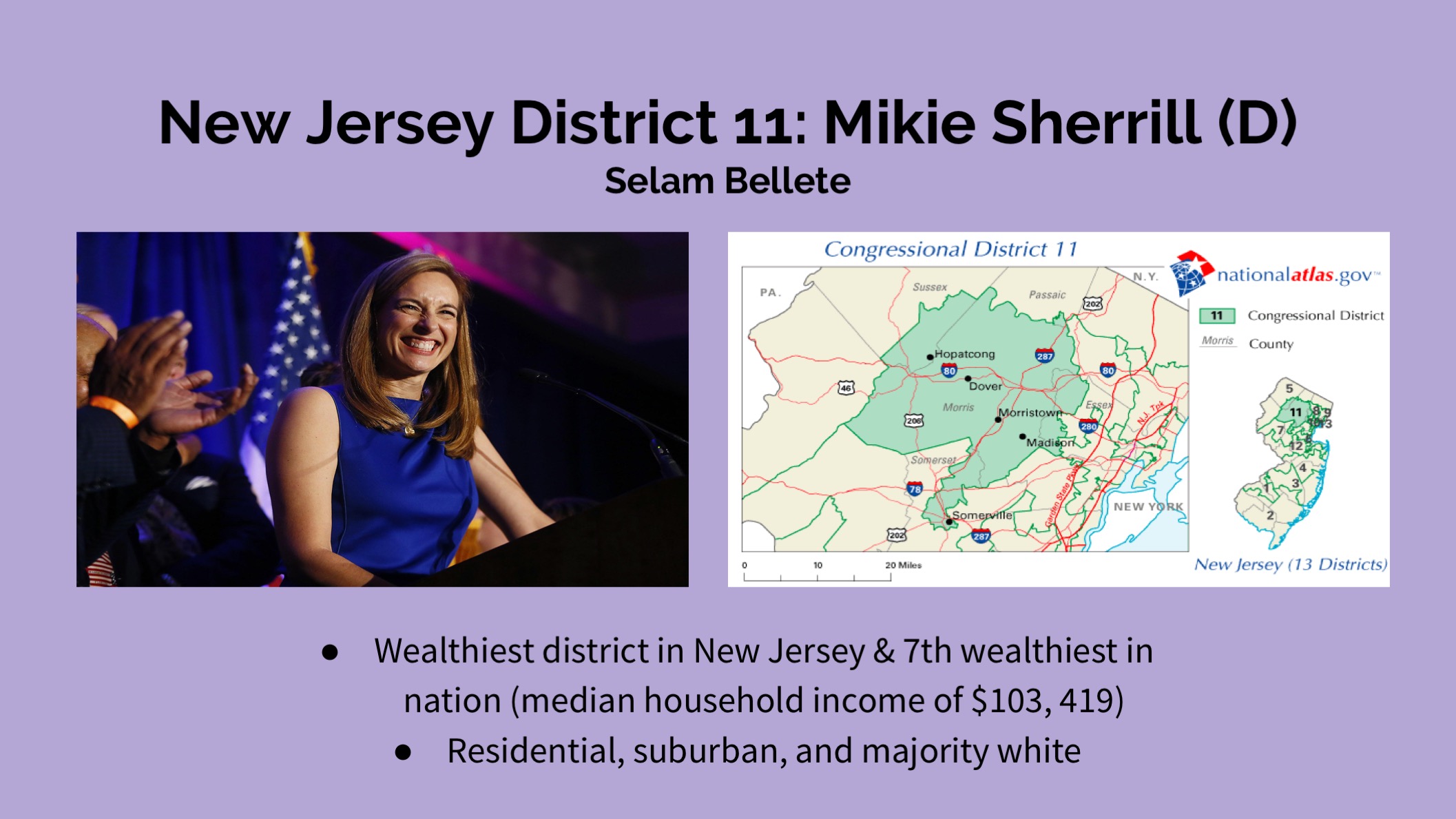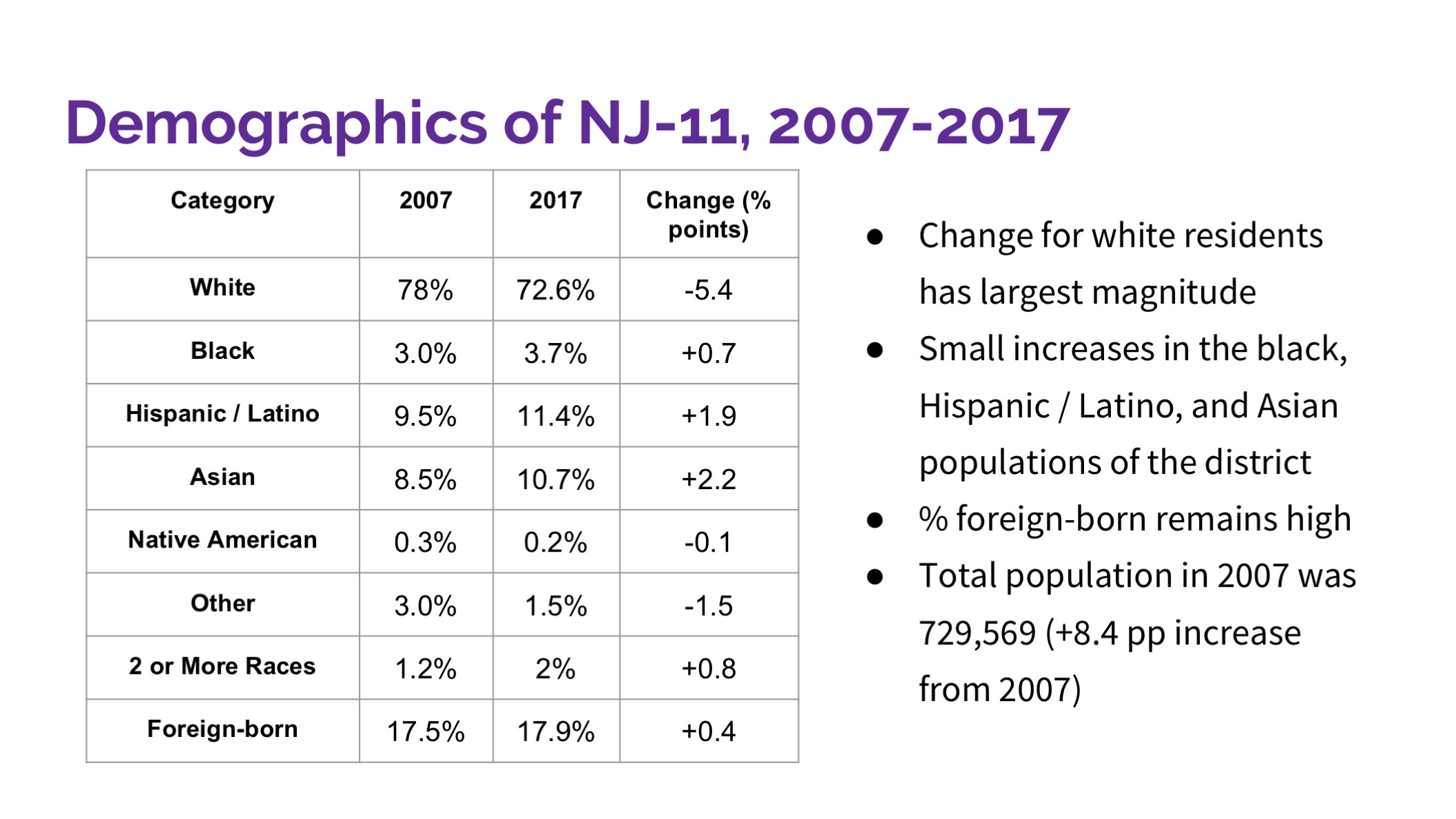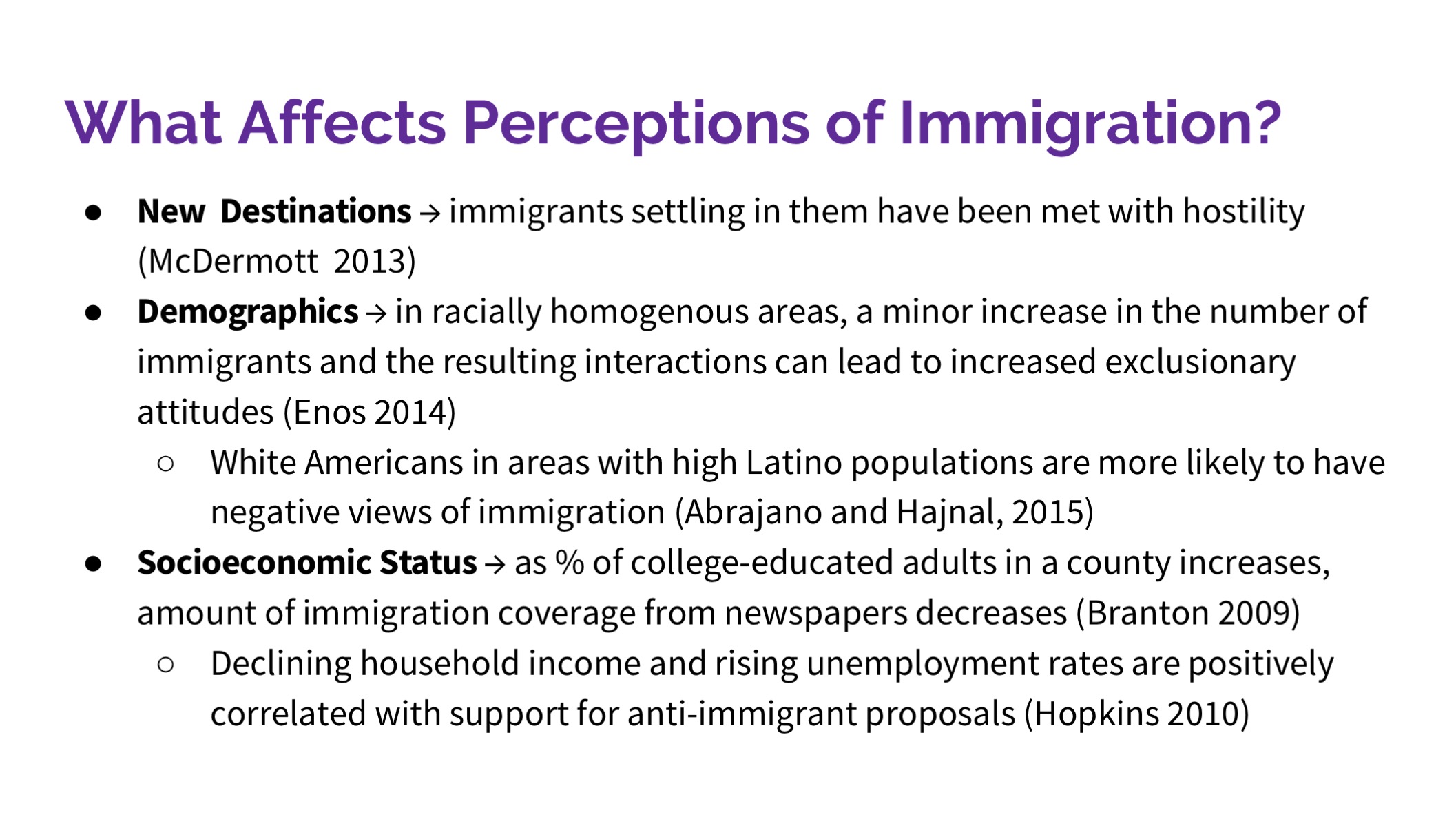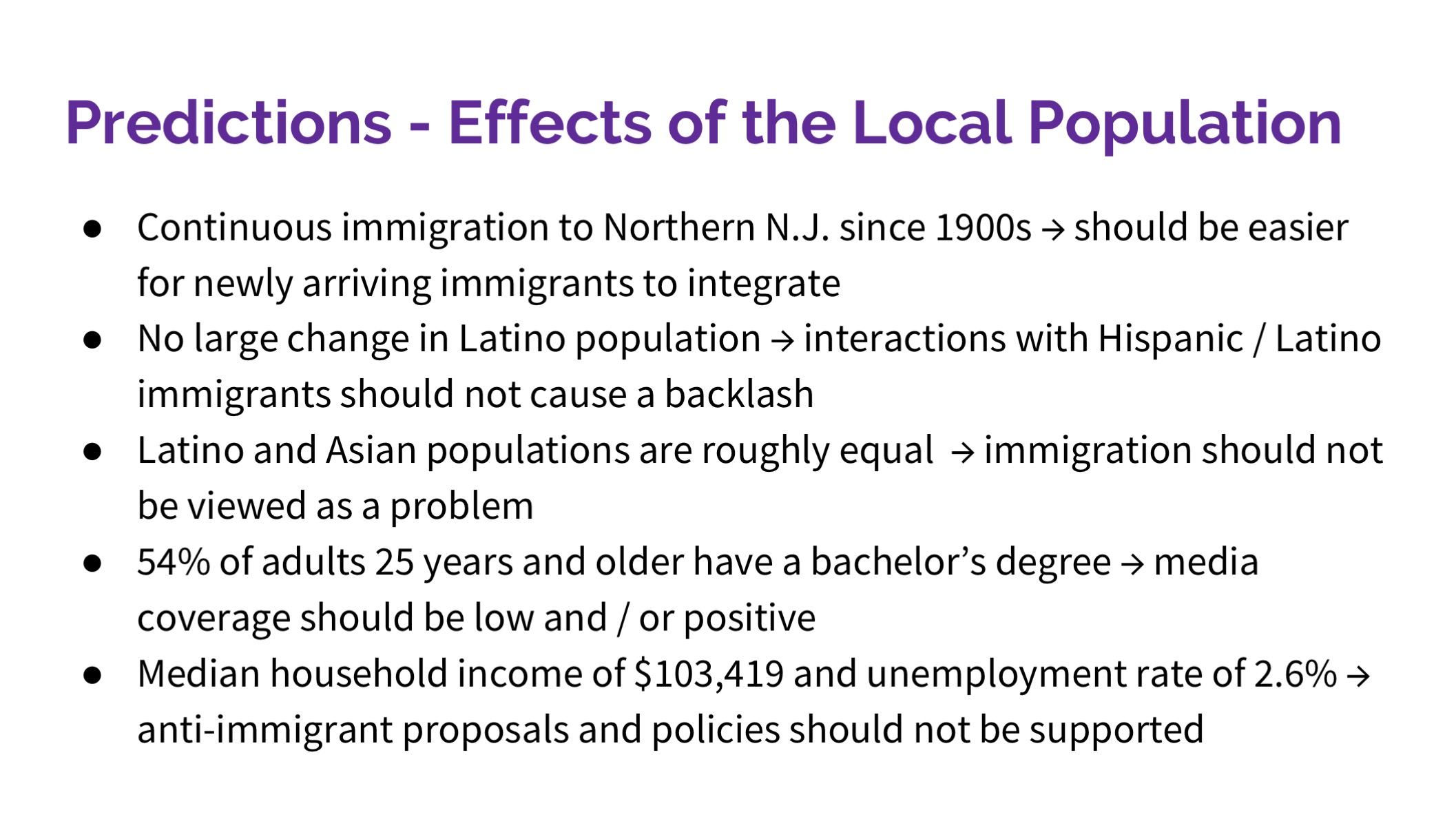

From 2007 to 2017, New Jersey’s 11th Congressional District did not experience significant demographic changes. In both years, white residents made up about three-quarters of the population and overall minority populations remained low. The next largest segment of the population identified as Hispanic / Latino, followed by Asian citizens and black citizens. Since the estimated Pacific Islander population for both 2007 and 2017 was 0%, I did not include it in my table. Asian residents had the largest change out of any minority, which was 2.2 percentage points. Although white residents actually saw a 5.4 percentage-point decrease in their proportion of the district’s total population, I doubt this change will be significant because of the district’s large population. The foreign-born population experienced an increase of 0.4 percentage points from 2009 to 2019, which is the second-smallest change of any of the groups mentioned. Since the total proportion of the population that is foreign-born is larger than each individual minority group for both years, I believe that they as a whole will have a greater impact on white Americans’ perceptions of immigration issues.

Existing literature suggests that the historical, racial, and socioeconomic status of a geographic area shape its relationship with immigration. McDermott notes that immigrants moving to the rural Midwest and South, where most of the population is native-born, have not been warmly welcomed. Immigrants do not always fit into the black-white racial divide characterizing these regions’ history, so their presence may heighten racial identities on each side and make the native-born less interested in interacting with them. Similarly, Enos’s social experiment demonstrated that these interactions in majority-white areas negatively impact immigrant experiences. Abrajano and Hajnal find an opposite reason for these exclusionary attitudes, as their statistical analysis in Ch.4 showed that white Americans in states with large Latino populations were more likely to view immigration as the country’s worst problem (133). They mention that living near a large outgroup can represent a threat to the in-group, so in this case white Americans living near large immigrant populations may overestimate the extent to which immigrants compete with them for jobs and political offices. On a more positive note, Branton finds that districts with a high socioeconomic status are less likely to have any sort of media coverage on immigration. The media often sensationalizes the economic threats of immigration in order to cater to its viewers, but college-educated people (which tend to be richer) are less likely to be worried about threats to their economic status. This narrative aligns more closely with the reality of people who are not financially secure or work in low-skilled jobs, which explains why Hopkin’s analysis finds an opposite relationship between areas with a lower socioeconomic status and support of anti-immigrant proposals.

I predict that immigrants’ experiences in NJ-11 will be positive. Although the majority of the district’s citizens are native-born, the historical presence of ethnic enclaves in and around the district means that residents there are already accustomed to immigrants’ presence. Thus, new immigrants will not be perceived as especially unusual by white residents and should not cause an increase in hostile attitudes. Similarly, the results of Enos’s study are not applicable to NJ-11 because the Latino population only increased by 1.9% over the last decade. The white Americans in his experiment developed negative attitudes after a sudden and noticeable demographic change, whereas the change in NJ-11’s Latino population took place over a much longer time period. Hispanics and Latinos also do not comprise a large majority of the district when compared to other minority groups, and according to White Backlash this should make white Americans less likely to view immigration negatively. Lastly, the district’s high proportion of college-educated adults and overall affluence predicts less media coverage on immigration. Since they are less likely to perceive immigration as a threat, news outlets would not profit by making it a salient issue in their coverage. For these same reasons, residents here will also be less likely to support policies that hurt immigrants’ ability to move up the economic ladder.

I plan to test my prediction about the effect of the high proportion of college-educated adults in NJ-11 on the salience of immigration in local news coverage. I will conduct an analysis of online news articles published between the start of the December 2018 government shutdown and one week after Trump’s State of the Union address. I chose to limit my search period to this date because of Trump’s references to illegal immigration in his address: since they were inflammatory, I believe that immigration news coverage would shift from the shutdown to his speech. The newspaper I will examine for NJ-11 is The Daily Record, which I chose because it is owned by the publicly traded Gannett Corporation. Since Branton’s study states that these organizations are more motivated by profit than privately owned newspapers, their coverage patterns should be more strongly influenced by population characteristics. My second newspaper is the Burlington County Times, which I chose so I could compare news coverage patterns across areas with different education levels (Burlington County is located in NJ-3). The district has a similar proportion of white and Hispanic/Latino residents (74.6% and 8.4%) and median household income of $82,301, which may minimize any extraneous effects of race and economic status on my dependent variable. I plan to use the term “shutdown” in conjunction with “border wall”, “immigration”, “Mexico”, and “Trump” for each news website. I will also categorize the articles based on whether they discuss the shutdown’s relationship to immigration, impact on government employees, or the conflict between President Trump and Democrats in Congress. I plan to compare the weekly and overall proportion of articles in each framing category since a high proportion of articles in the week of the shutdown followed by a decrease would be indicative of regular coverage (if it was a salient topic, the proportion of articles on it wouldn’t decrease as time passed). To compare immigration-related articles with a positive or negative tone, I will use this quantitative method as well as taking note of the imagery used.